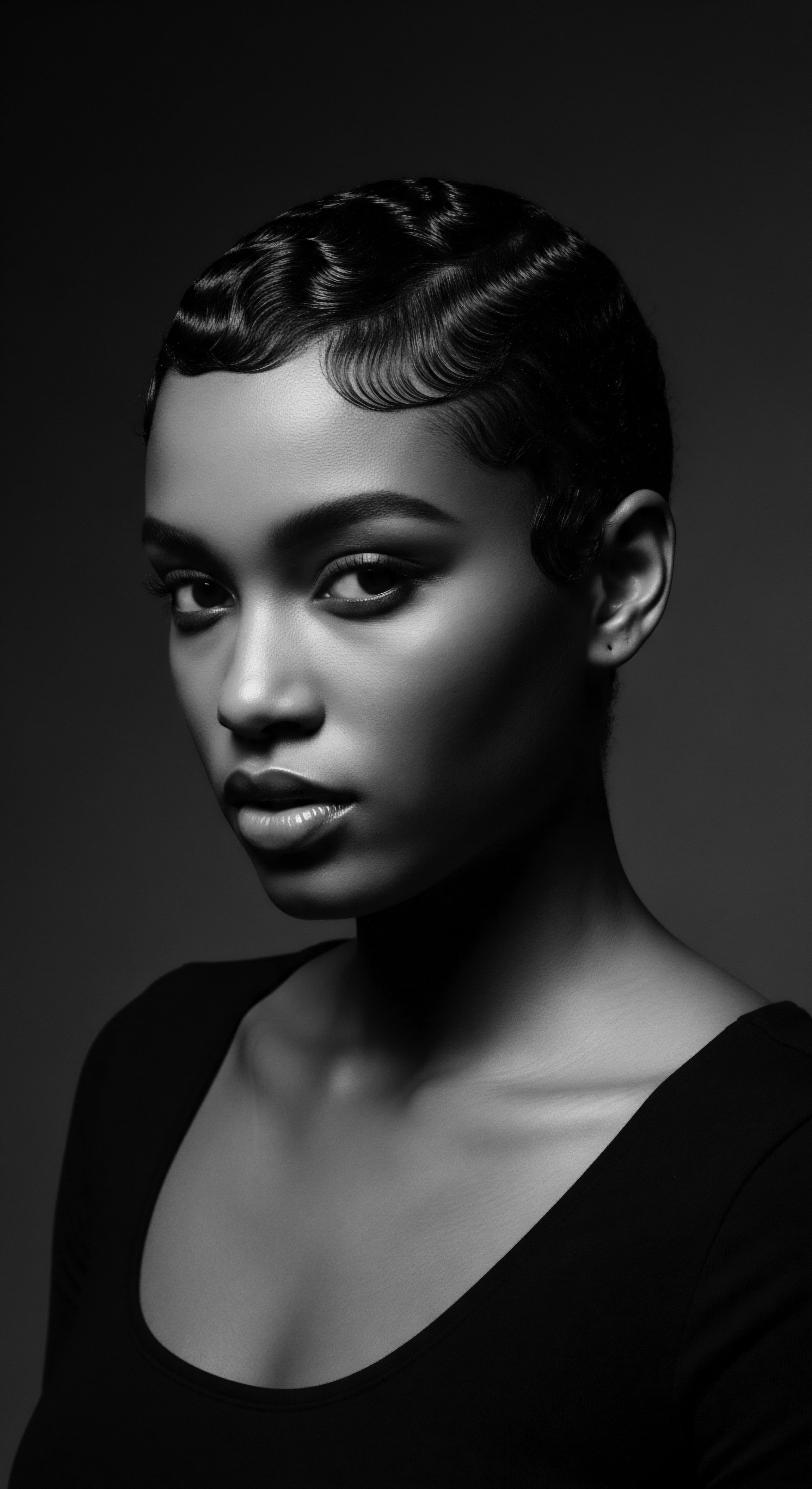
Fundamentals
The conversation surrounding textured hair often begins with surface observations, yet its true complexity resides within its very structure. We refer to this underlying blueprint as the Textured Hair Architecture. Simply put, this concept describes the intricate arrangement of components that make each strand of textured hair unique, defining its curl, coil, or wave pattern.
This structural arrangement is not merely a matter of aesthetics; it stands as a living testament to ancestral adaptations and enduring legacies of care. Understanding this architectural truth helps us appreciate the deeply personal and cultural dimensions of textured hair.
At its most fundamental level, hair emerges from the scalp, a keratinous filament rooted in an epidermal penetration of the dermis called the Hair Follicle. This follicle’s particular shape dictates the hair’s path as it grows. Round follicles typically yield straight strands, while those with an oval or kidney shape contribute to curlier textures.
The more pronounced the oval or kidney shape, the tighter the curl or coil becomes. This foundational biological aspect directly connects to the inherited patterns seen across families and communities, reflecting ancient human adaptations to diverse environments across millennia.
Textured Hair Architecture represents the inherent design of curls, coils, and waves, carrying echoes of ancestral wisdom and environmental adaptation within each strand.
Within each hair strand, a complex composition of layers shapes its distinct behavior. The outermost layer, the Cuticle, consists of overlapping, scale-like cells that protect the hair’s inner core. Beneath this protective shield lies the Cortex, the primary determinant of a strand’s strength, elasticity, and color. It holds keratin proteins, forming disulfide bonds that influence hair shape.
The central core, the Medulla, may or may not be present, especially in finer textures, but contributes to hair volume, strength, and elasticity when it is. These layers, working in concert, craft the individual expression of texture we observe.
From the earliest communal practices, hair was understood not only as a physiological phenomenon but also as a powerful social one. Its presence, its absence, and its styling conveyed profound messages about a person’s standing, beliefs, and even spiritual connection within a community. (Delaney, 1994) The methods used to care for and adorn hair were passed down through generations, rooted in a collective knowledge that intuitively grasped the interplay between the hair’s inherent structure and its long-term health. These practices, honed over centuries, represent the initial responses to the challenges and blessings presented by textured hair architecture.

The Hair Follicle and Its Form
The journey of each hair strand begins deep within the skin, in the Hair Follicle, a tiny, tube-like structure. The unique shape of this follicle at its root determines whether the hair shaft that emerges will be straight, wavy, or tightly coiled. A round follicle generally produces straight hair, allowing for a uniform, circular cross-section.
As the follicle becomes more oval or even flat in shape, the hair strand growing from it develops a curved or helical path, resulting in waves, curls, or coils. This fundamental biological attribute, often determined by genetic factors passed down through family lines, explains the diversity of textures observed across human populations.
The angle at which the follicle sits within the scalp also plays a role in the curl pattern. Hair that is curlier often grows from follicles that are more angled or even perpendicular to the scalp, leading to tighter spirals. Conversely, straighter hair follicles tend to align more vertically. This anatomical distinction underscores the foundational biological elements that shape the unique architectural design of every textured hair strand.
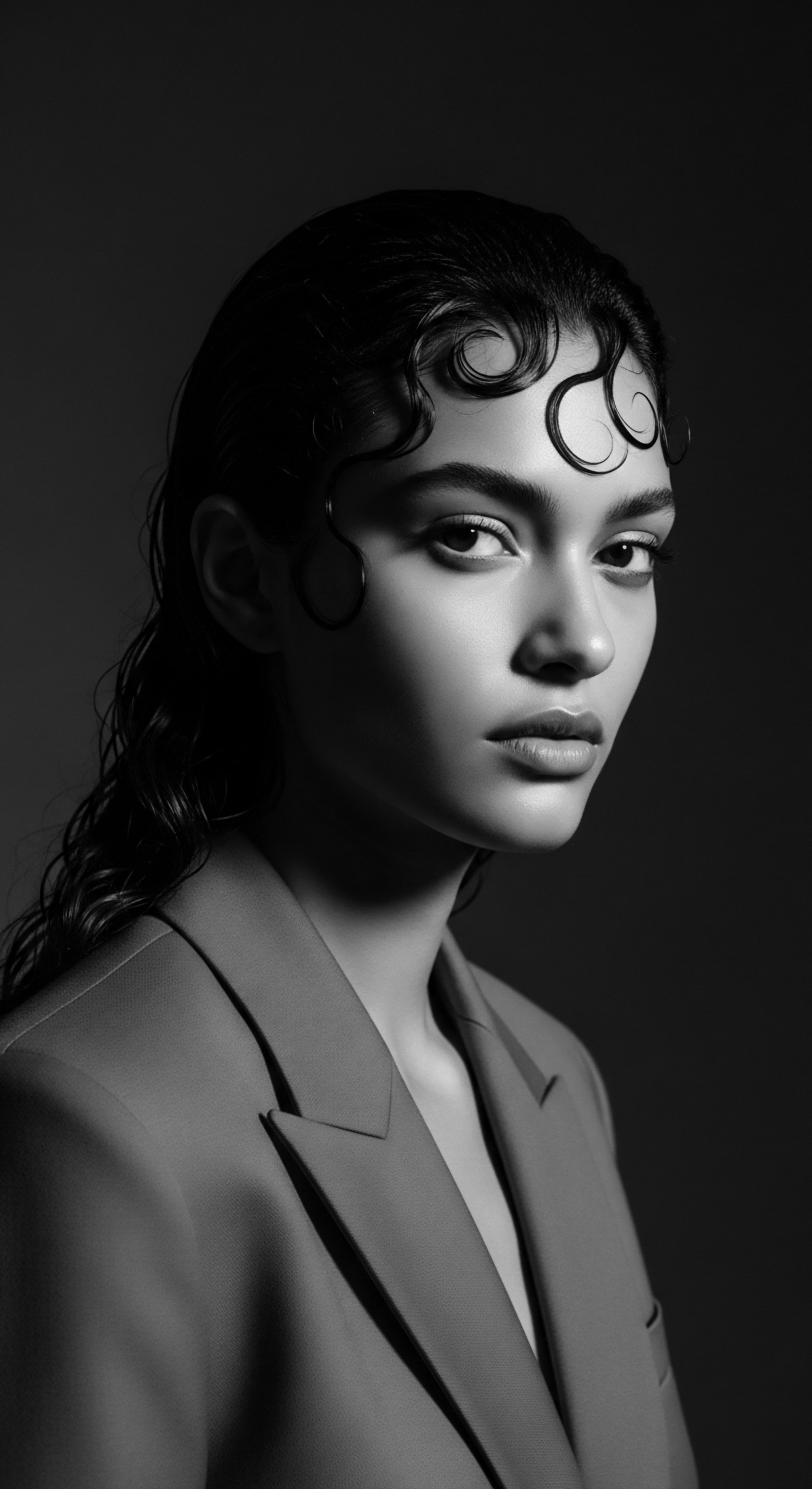
The Inner Life of a Strand ❉ Layers of Strength
Beyond the follicle’s shape, the internal layering of the hair shaft defines its capabilities and responsiveness. The hair shaft consists of three main layers, each contributing to the overall integrity and appearance of textured hair.
- Cuticle ❉ This outermost layer forms a protective barrier, composed of flattened, overlapping cells that resemble shingles on a roof. A healthy cuticle lies flat, reflecting light and offering a smooth surface. In textured hair, due to its curved and often elliptical shape, the cuticle layers may be more exposed, which can contribute to dryness and susceptibility to external elements.
- Cortex ❉ Positioned beneath the cuticle, the cortex constitutes the majority of the hair’s mass. It contains the proteins that give hair its strength, elasticity, and determines its natural color. The arrangement of these protein fibers and the chemical bonds within the cortex largely dictate the hair’s curl pattern.
- Medulla ❉ This innermost core of the hair shaft is a loosely arranged, often discontinuous, or even absent layer, particularly in finer hair. When present, it contributes to the hair’s overall volume, strength, and thermal regulation.
These structural elements, inherited through generations, form the architectural basis of textured hair. Understanding their properties provides a foundational appreciation for the hair’s inherent characteristics and the traditional practices developed to care for them.

Intermediate
Building upon the foundational understanding of textured hair’s biological design, we now explore how the intricate structural components of Textured Hair Architecture dictate its distinctive behaviors and inspire centuries of care. This goes beyond a simple recognition of curls; it enters the realm of how these inherited forms interact with their environment and how ancestral knowledge has guided their preservation. The form of the hair follicle, deeply rooted in our genetic heritage, sculpts the very nature of the strand, leading to varying degrees of curl, from loose waves to tight coils. This biological blueprint is not static, though; it actively responds to care, climate, and the hands that tend it.
The distinct patterns of textured hair—waves, curls, and coils—arise from the varying shapes of the hair follicle, ranging from oval to highly elliptical, and the distribution of keratin proteins within the hair shaft. Each twist and turn in a textured strand reflects a unique distribution of disulfide bonds, which are chemical links within the hair’s protein structure that maintain its shape. These bonds are the architects of memory within the hair, influencing how it holds a style, responds to moisture, or resists manipulation. Ancestral practices instinctively understood this inherent quality, developing rituals that honored the hair’s natural inclinations rather than attempting to force a different structure.

Variations in Curl and Coil Patterns
The vast spectrum of textured hair finds its expression in a myriad of curl and coil patterns, each with its own architectural signature and care needs. These patterns are often categorized to aid understanding, though the reality is a beautiful continuum rather than strict divisions.
- Waves ❉ These strands typically emerge from slightly oval follicles, resulting in an ‘S’ shape. The cuticle layers tend to lie flatter, yet the undulating pattern means they can be more susceptible to frizz if not properly hydrated.
- Curls ❉ Progressing to a more defined spiral, curly hair originates from more oval follicles. The distinct curl pattern leads to a greater number of cuticle layers being exposed, necessitating focused moisture retention strategies passed down through generations.
- Coils ❉ The tightest of textures, coily hair grows from highly flattened or kidney-shaped follicles, forming very tight, small spirals or zig-zag patterns. This architecture results in the most exposed cuticle, making it particularly prone to dryness and shrinkage, qualities that traditional care practices have long sought to address through rich emollients and protective styling.
Understanding these architectural nuances is paramount to providing appropriate care. Traditional African communities, for instance, developed sophisticated systems of hair care that were inherently tailored to these variations, long before modern science articulated the precise biological mechanisms. Their wisdom, passed down through oral traditions and communal rituals, reflected a deep intuitive knowledge of the hair’s needs.
The myriad of textured hair patterns, from gentle waves to resilient coils, speaks to an inherited biological design that has shaped haircare rituals across generations.

Ancestral Knowledge and Architectural Preservation
For centuries, caretakers of textured hair in diverse ancestral communities recognized the inherent requirements of their hair’s architecture. They did not possess microscopes or chemical analyses, yet their wisdom led them to practices that align remarkably with contemporary scientific understanding. This was particularly evident in their emphasis on moisture, protection, and gentle handling.
Traditional African hair care routines, for example, frequently involved the use of natural ingredients like Shea Butter, Coconut Oil, and various botanical blends. These substances provided intense hydration and created a protective barrier, effectively sealing the exposed cuticles of highly coiled hair against environmental aggressors. This approach directly addressed the architectural vulnerability of textured hair to dryness and breakage, ensuring its health and vitality.
| Aspect of Hair Architecture Moisture Retention (Cuticle Sealing) |
| Ancestral Practice (Historical) Application of natural butters (e.g. shea, cocoa) and plant oils. |
| Modern Understanding/Analog Occlusives and emollients to seal cuticle layers; deep conditioning treatments. |
| Aspect of Hair Architecture Strength & Elasticity (Cortex Protection) |
| Ancestral Practice (Historical) Protein-rich plant extracts, communal braiding rituals. |
| Modern Understanding/Analog Protein treatments, bond-building technologies (e.g. disulfide bond repair). |
| Aspect of Hair Architecture Minimizing Manipulation (Breakage Prevention) |
| Ancestral Practice (Historical) Protective styles (braids, twists, Bantu knots) and gentle detangling. |
| Modern Understanding/Analog Low-manipulation styles, wide-tooth combs, silk/satin bonnets. |
| Aspect of Hair Architecture Scalp Health (Follicle Environment) |
| Ancestral Practice (Historical) Herbal rinses, scalp massages with oils, cleansing clays. |
| Modern Understanding/Analog Clarifying shampoos, scalp serums, targeted treatments for scalp microbiome. |
| Aspect of Hair Architecture These practices, rooted in ancestral wisdom, continue to inform contemporary textured hair care, honoring the hair's inherent design. |
Protective styling, such as intricate Braids, Cornrows, and Bantu Knots, also formed a cornerstone of ancestral care. These styles minimized exposure to elements, reduced tangling, and protected the hair shaft from mechanical stress, allowing the hair to retain moisture and length. This intentional reduction of manipulation recognized the inherent fragility of textured hair, which is more prone to breakage at its numerous curves. Such styles were not solely about adornment; they were deeply practical methods of preserving the hair’s architectural integrity over extended periods.
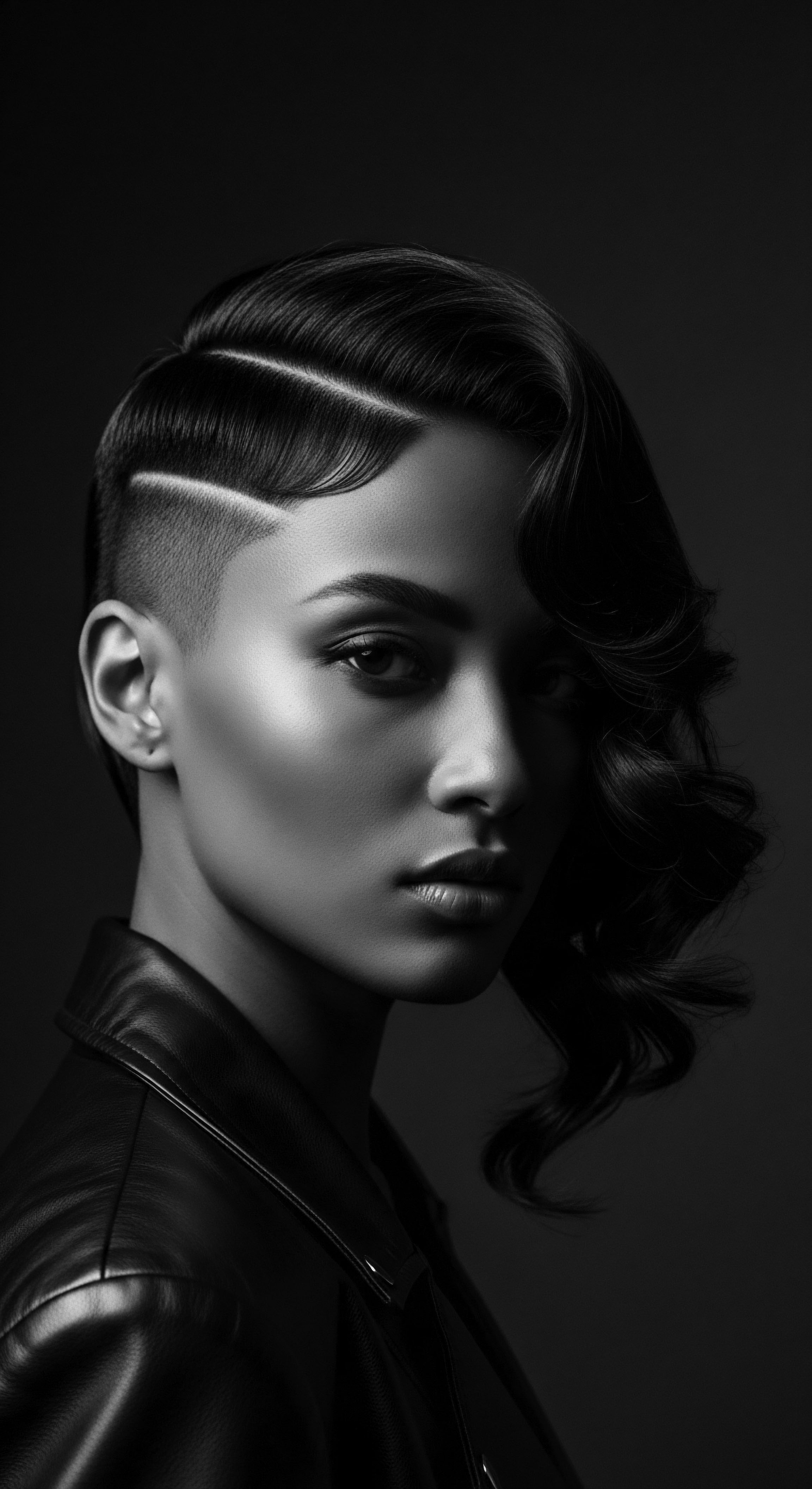
The Legacy of Adaptation and Self-Expression
The journey of textured hair through history is a powerful narrative of adaptation. From the forced assimilation of enslaved individuals to the resilience of those in the diaspora, hair care traditions continued to evolve. Despite immense pressure to conform to Eurocentric beauty standards, the desire to maintain and celebrate textured hair persisted.
Communities created makeshift tools and adapted available ingredients, ensuring the survival of practices that honored their inherited hair architecture. This continuity highlights a profound commitment to cultural identity, even when facing extreme adversity.
The wisdom embedded in these practices speaks volumes, affirming that understanding one’s textured hair architecture is not a new concept. It is an ancient knowing, passed down through time, adapting to new circumstances while holding true to principles of respect and thoughtful care for the hair’s inherent design. This ongoing legacy continues to shape identity and self-expression, offering guidance for navigating the unique requirements of textured hair today.
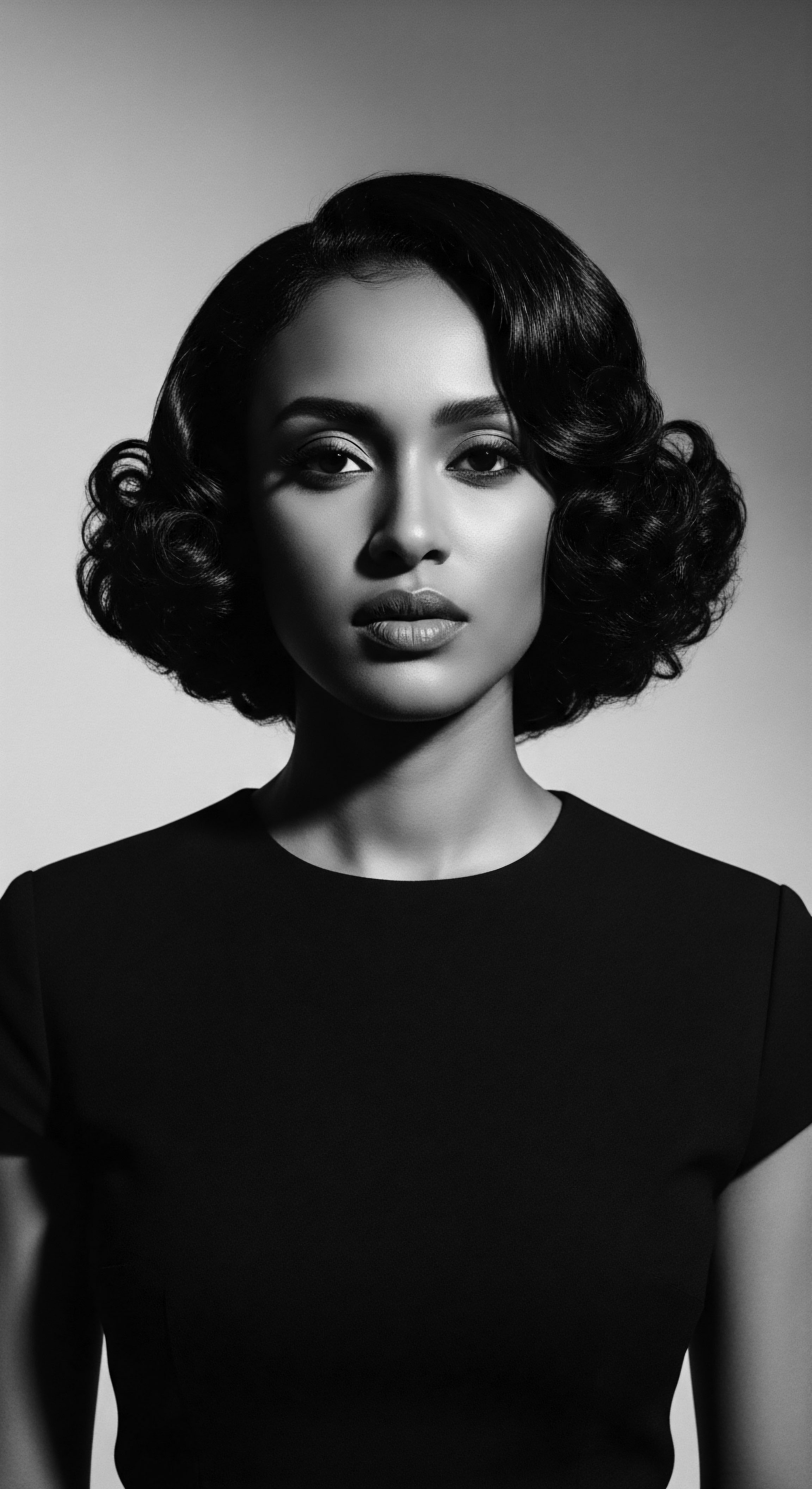
Academic
The Textured Hair Architecture stands as a sophisticated biological construct, a profound expression of human genetic diversity, and a resonant cultural artifact. From an academic perspective, its definition extends beyond mere physical properties to encompass the complex interplay of genetics, cellular morphology, historical socio-political pressures, and enduring identity formations. It is a system wherein the macro-level appearance of curls, coils, or waves is inextricably linked to micro-level biological mechanisms and, furthermore, to centuries of lived experience within Black and mixed-race communities. This comprehensive view necessitates an examination of the hair strand as a dynamic entity, its inherent form shaped by hereditary markers and its care practices refined through ancestral wisdom and communal resilience.
At its core, the architectural uniqueness of textured hair begins at the cellular stratum of the hair follicle. The shape of the follicle, which can range from perfectly round to highly elliptical or even kidney-shaped, directly dictates the cross-sectional shape of the hair fiber. A more elliptical follicle generates a flatter, ribbon-like hair shaft, which naturally coils or curls as it grows, much like a spiraling ribbon unspooling from a bobbin.
This morphology is governed by specific gene variations, such as polymorphisms in genes like TCHH (trichohyalin) and KRTAP (keratin-associated protein) family members, which influence the structural proteins that build the hair shaft and contribute to its characteristic curvature. These genetic determinants, passed down through generations, form the deep biological foundation of textured hair architecture.
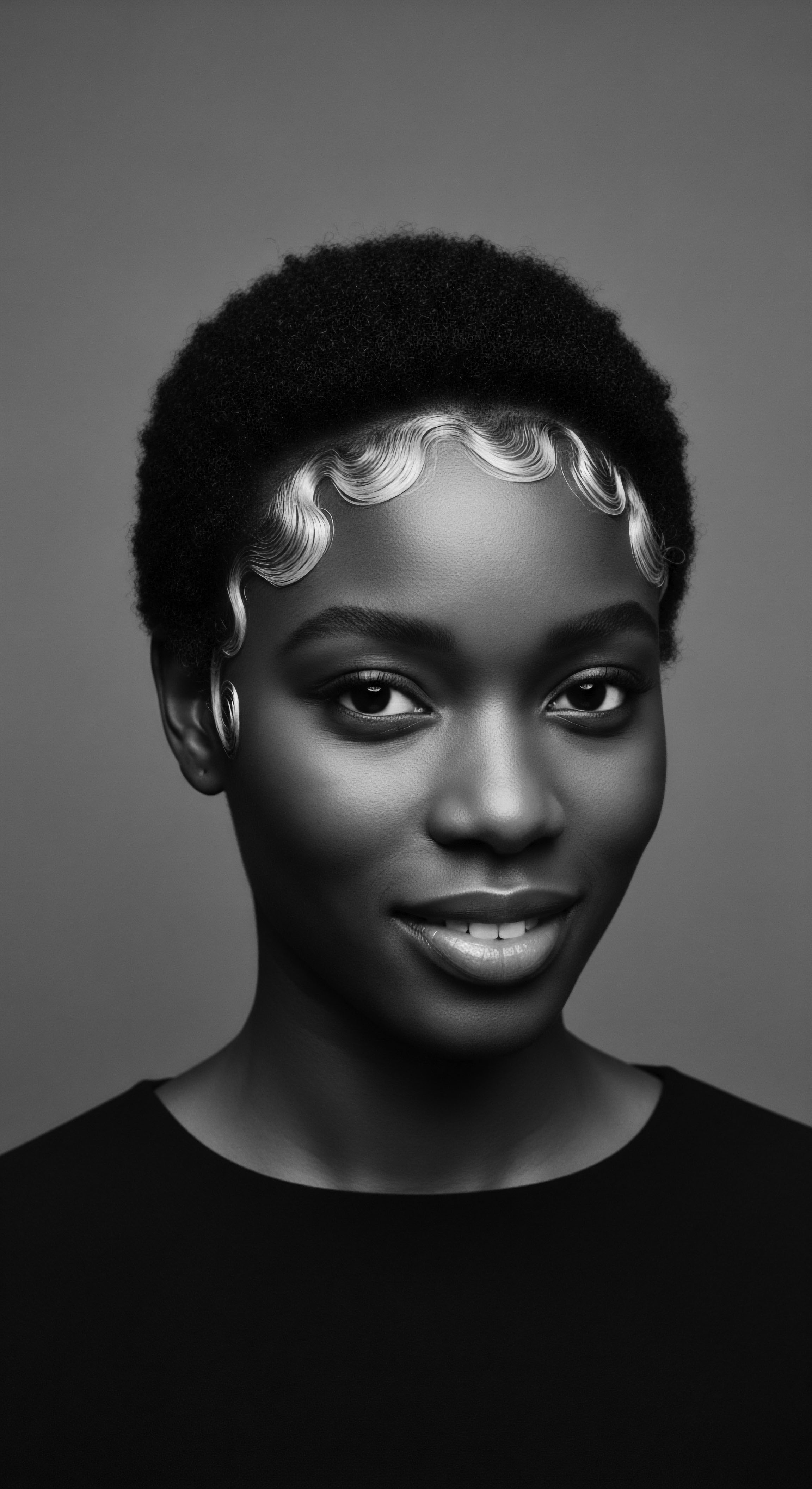
The Biomechanical and Cellular Determinants
The physical manifestation of textured hair architecture is a consequence of biomechanical forces acting upon the keratinocytes as they differentiate and keratinize within the hair follicle. The unequal distribution and cross-linking of cysteine-rich keratin proteins within the cortex, particularly influenced by the elliptical follicle shape, result in differential growth rates along the circumference of the hair shaft. This differential growth causes the hair to bend and twist, giving rise to its characteristic curl or coil.
Moreover, the arrangement of disulfide bonds, the robust chemical links between keratin proteins, plays a critical role in stabilizing these helical structures. Tightly coiled hair typically exhibits a higher density of these bonds and a more uneven distribution, contributing to its distinct spring-like resilience and propensity for shrinkage.
The medulla, often present in thicker textured hair, also contributes to its structural integrity and volumetric qualities. This loosely arranged, sometimes discontinuous, central core can influence the hair’s overall strength and elasticity, elements that traditional hair care practices have long aimed to preserve. Scientific inquiry into these micro-anatomical distinctions continues to deepen our comprehension of how Textured Hair Architecture responds to various treatments, from deep conditioning to chemical alterations. This research frequently validates long-standing ancestral practices, revealing the scientific basis for treatments that intuitively maintained the hair’s delicate balance of strength, moisture, and flexibility.
The intricate structure of textured hair is not merely a biological phenomenon; it is a profound testament to genetic heritage, socio-cultural resilience, and enduring self-expression.
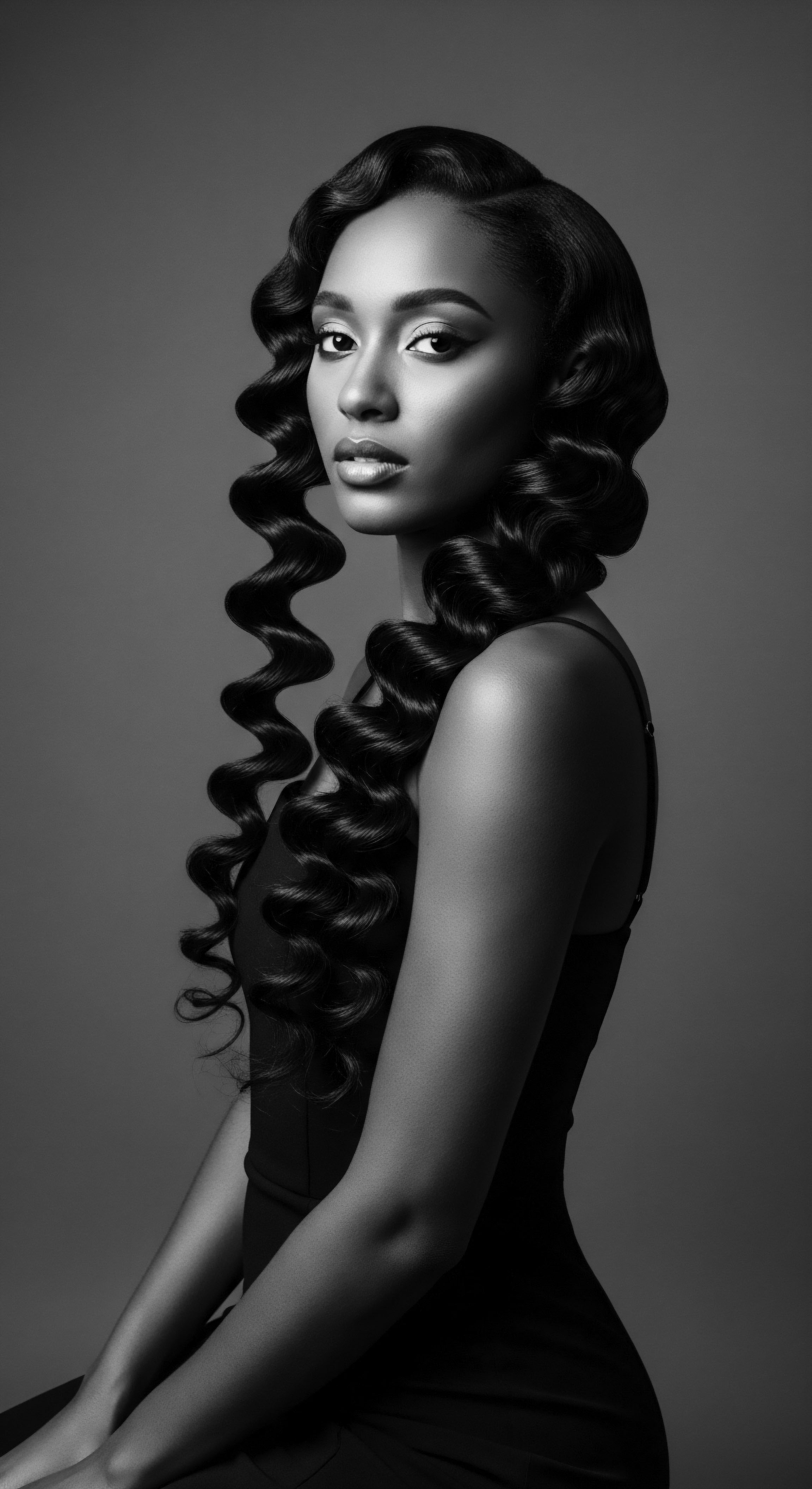
Cultural and Sociological Dimensions of Hair Architecture
Beyond its biological framework, Textured Hair Architecture carries profound cultural and sociological weight, particularly within the African diaspora. Historically, in numerous African societies, hairstyles were far more than superficial adornments; they were intricate symbols. Hairstyles conveyed social status, age, marital status, tribal affiliation, and even spiritual beliefs, serving as a complex visual language. The specific patterns and styling techniques directly interacted with the inherent architecture of the hair, allowing for both artistic expression and functional protection.
For instance, tightly braided patterns, or cornrows, could communicate tribal identity or, in times of distress, even serve as maps for escape routes, subtly embedded within the hair’s design. This deep historical and cultural context is essential to a full understanding of Textured Hair Architecture.
The advent of the transatlantic slave trade violently disrupted these traditions, forcing enslaved Africans to abandon their cultural grooming practices and, in many instances, shave their heads as an act of dehumanization. In the subsequent centuries, particularly in the Americas, Eurocentric beauty standards were imposed, systematically devaluing natural textured hair and promoting its alteration through chemical relaxers or straightening combs. This historical pressure to conform has had profound psychological and social consequences, contributing to internalized racism and negative self-perception regarding natural hair.
A potent historical example of the direct policing of textured hair architecture is found in the Tignon Laws enacted in colonial Louisiana in 1786. The Spanish colonial governor, Esteban Miró, decreed that free women of color in New Orleans were required to cover their hair with a tignon, a headscarf, when in public spaces. This law was not merely about modest dress; it aimed to diminish the perceived beauty and social standing of these women, whose elaborate, natural hairstyles were attracting the attention of white men and threatening the rigid racial hierarchy. Virginia M.
Gould, in her historical analysis, highlights that the intent was to control women who were seen as “competing too freely with white women for status” (Gould, as cited by JourJou Hair Studio, 2019, p. 1). The intrinsic architecture of their hair, whether styled in gravity-defying arrangements or intricate braids, was itself viewed as a symbol of power and allure.
Yet, in a powerful act of resistance, these women transformed the symbol of oppression into an expression of creativity and wealth. They adorned their tignons with vibrant fabrics, jewels, and feathers, making them even more striking. This historical episode reveals that the perceived ‘problem’ was not simply hair, but the inherent beauty and social capital derived from its natural architecture, which challenged a colonial power structure. The Tignon Law thus provides a compelling case study of how the physical reality of textured hair architecture became a site of social control and, equally, a canvas for profound cultural defiance.
The resilience witnessed in such historical responses laid foundational ground for later movements, such as the “Black Is Beautiful” era of the 1960s and the contemporary natural hair movement. These movements actively reclaim and celebrate textured hair architecture as a source of cultural pride, self-acceptance, and resistance against persistent Eurocentric beauty ideals. The architectural blueprint of textured hair, therefore, is not only a biological endowment but a dynamic repository of cultural memory and an ongoing declaration of identity.
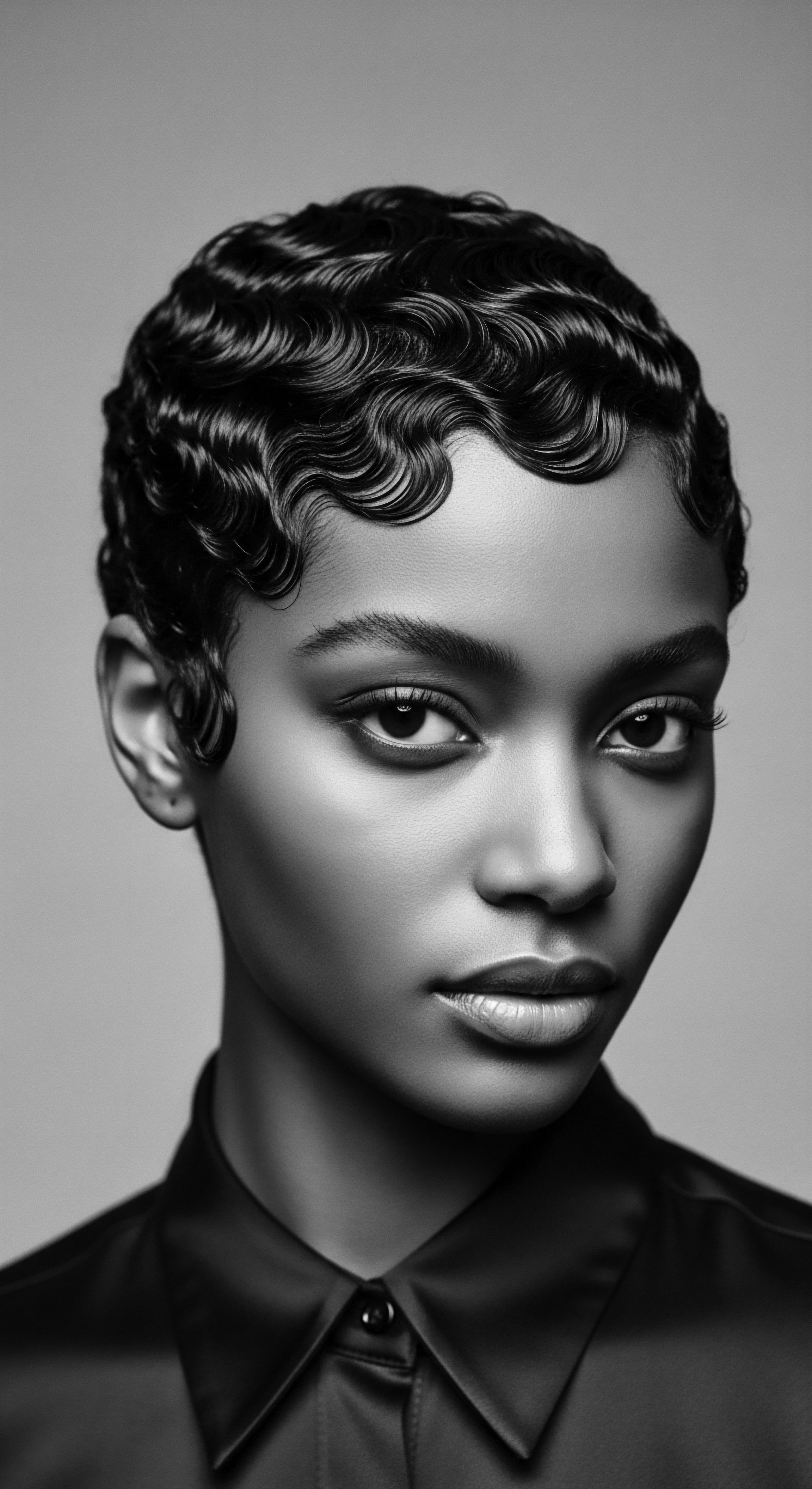
Interconnected Incidences and Long-Term Consequences
The historical subjugation and marginalization of textured hair architecture have had long-term consequences that extend into contemporary societal perceptions and mental well-being. Discrimination against textured hair, often manifesting as policies deeming natural styles “unprofessional” or “unkempt,” continues to affect individuals in academic and professional settings. This ongoing bias, rooted in historical efforts to suppress cultural identity, contributes to significant psychological distress, including internalized racism, anxiety, and a feeling of cultural disconnection.
Research indicates that individuals, particularly Black women, often feel compelled to chemically alter their natural hair texture to avoid such discrimination, leading to potential physical damage to the hair and scalp, as well as emotional compromises. The very architecture of textured hair, therefore, becomes a site of ongoing struggle and negotiation within societal spaces that have yet to fully dismantle these historically imposed beauty norms.
The evolving understanding of Textured Hair Architecture, both scientifically and culturally, offers a path toward healing and affirmation. Contemporary academic inquiry, drawing on fields from genetic science to anthropology and psychology, seeks to validate and elevate the inherent qualities of textured hair, challenging outdated prejudices. By recognizing the intricate biological design and its historical significance, we can collectively work towards fostering environments where every individual can embrace their natural hair architecture without fear of judgment or limitation.
The movement for hair freedom, epitomized by legislative efforts like the CROWN Act in the United States, represents a modern recognition of the deep personal and cultural significance of textured hair architecture. This legal protection aims to safeguard the right to wear one’s natural hair without discrimination, a crucial step in decolonizing beauty standards and honoring the ancestral heritage embedded in every coil and curl.
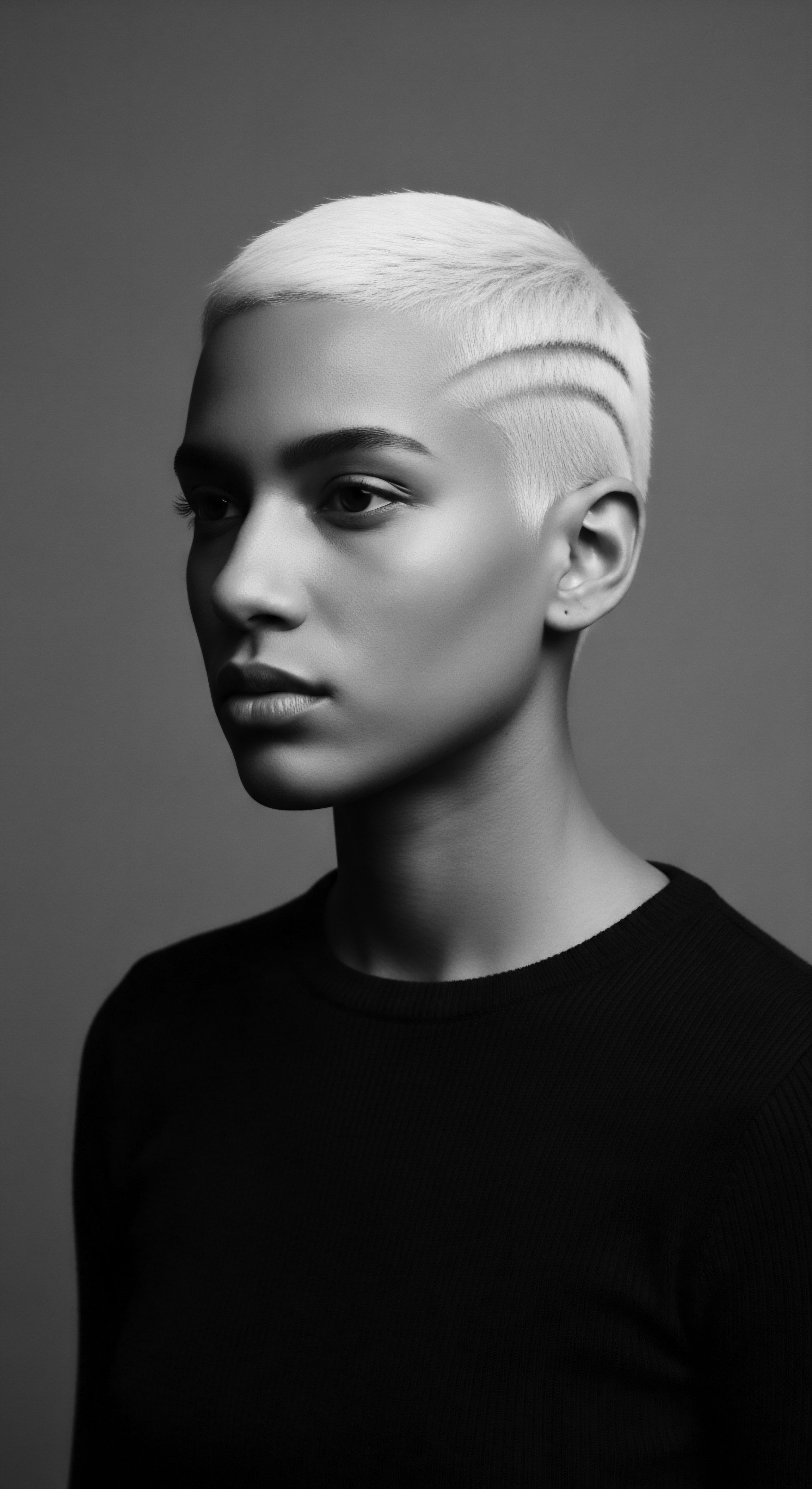
Reflection on the Heritage of Textured Hair Architecture
As we contemplate the meaning of Textured Hair Architecture, a profound sense of continuity emerges, linking the elemental biology of a single strand to the sprawling canvas of human heritage. The journey through its fundamental structures, its intricate patterns, and its complex socio-historical experiences reveals not merely a scientific classification but a living archive. Each curve, every coil, and the unique arrangement of keratin within, carry the whispers of ancestors who navigated diverse landscapes and preserved traditions of adornment and care.
This inherited design is a constant reminder of the adaptability and ingenuity that has always defined communities with textured hair. From the wisdom of ancient African remedies, passed down through generations, to the resilience expressed in the face of forced conformity, the care for textured hair has always been a conversation between the hand that tends and the inherited architecture it serves. This connection to ancestral wisdom reminds us that beauty practices are often deeply rooted in ecological intelligence and a profound respect for the body’s natural expressions.
The ongoing celebration of textured hair today is a powerful testament to this enduring spirit. It represents a collective reclamation, a joyous affirmation that the intrinsic qualities of textured hair are not to be altered or hidden, but understood, respected, and revered. When we speak of Textured Hair Architecture, we are speaking of the very Soul of a Strand—an unbroken lineage of identity, dignity, and beauty that continues to inspire and redefine standards across the globe. Our responsibility remains clear ❉ to honor this legacy by fostering environments where every head of textured hair is recognized for its inherent artistry and profound cultural richness.
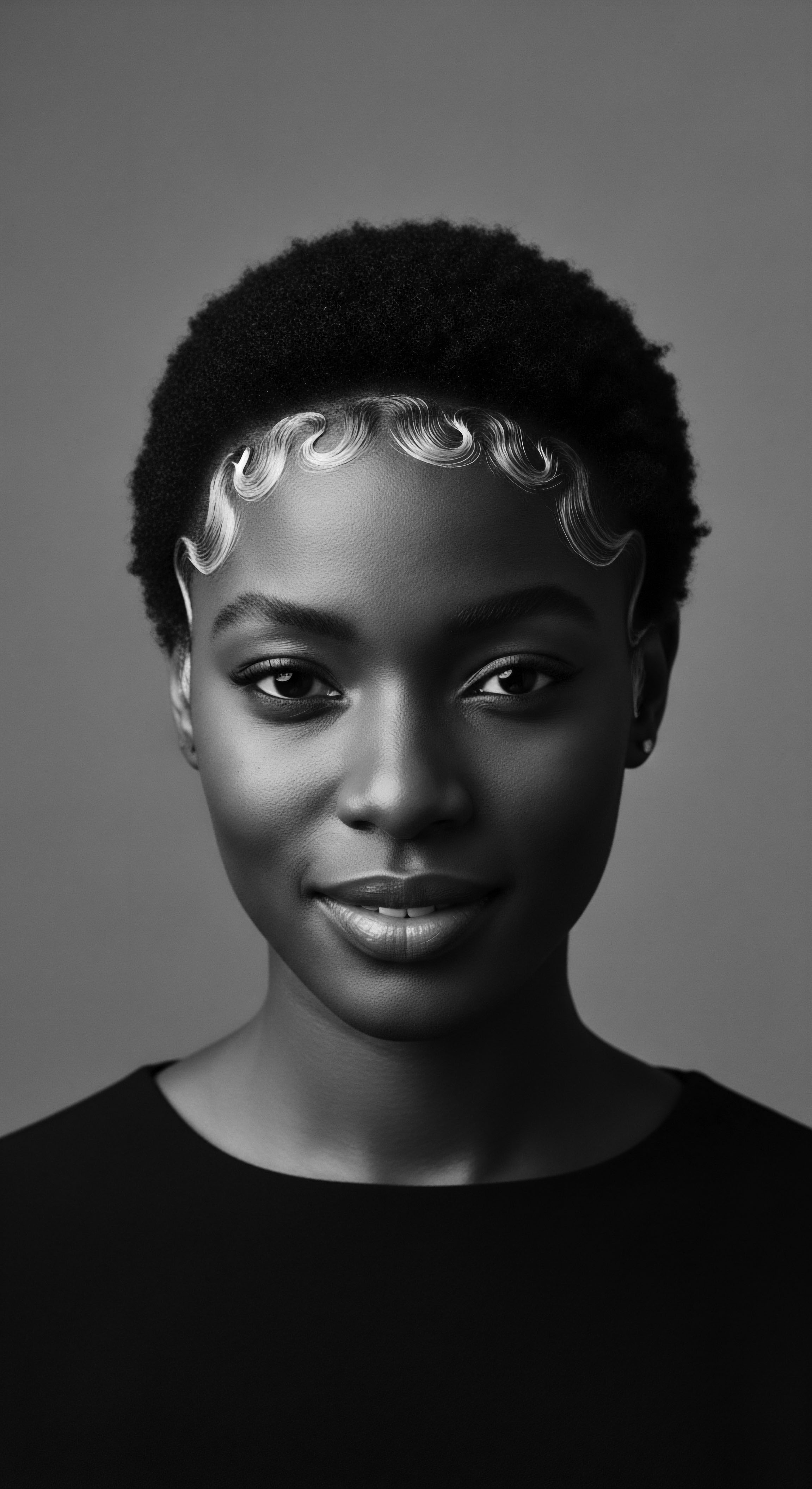
References
- Delaney, Carol. (1994). Untangling the Meanings of Hair in Turkish Society. Anthropological Quarterly, 67(4), 159-172.
- Gould, Virginia M. (1997). The Devil’s Lane ❉ Sex and Race in the Early South. Oxford University Press.
- Gueguen, A. & Le Gall, D. (2020). Hair structure and chemistry. In Cosmetic Science and Technology ❉ Theoretical Principles and Applications (pp. 21-46). CRC Press.
- Hall, R. L. (2009). African Americans in the United States ❉ A History of Hair and Identity. University of North Carolina Press.
- Ifemesia, C. (1979). Traditional African Hair Styles ❉ Their Origin and Evolution. Longman.
- Kempf, M. Kempf, S. & Green, A. (2024). Hair discrimination ❉ An overview and call to action. Journal of Black Psychology, 50(1), 3-25.
- Mbilishaka, A. M. (2024). Don’t Get It Twisted ❉ Untangling the Psychology of Hair Discrimination Within Black Communities. American Journal of Orthopsychiatry, 94(1), 1-10.
- Morgan, D. (2007). The Social History of Hair ❉ Culture, Fashion, Identity. Bloomsbury Academic.
- Pope, R. K. (2018). Hair in African-American Culture. University Press of Mississippi.
- Rifkin, R. (2017). Woven in the Hair ❉ Hair Symbolism in African American Women’s Autobiographies. Ohio State University Press.
- Sleeman, M. (1981). Medieval Hair Tokens. Forum for Modern Language Studies, 17(4), 322-330.
